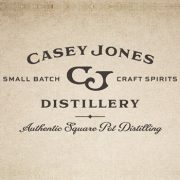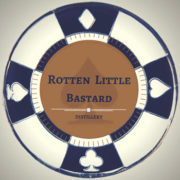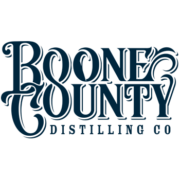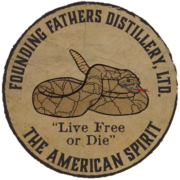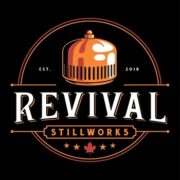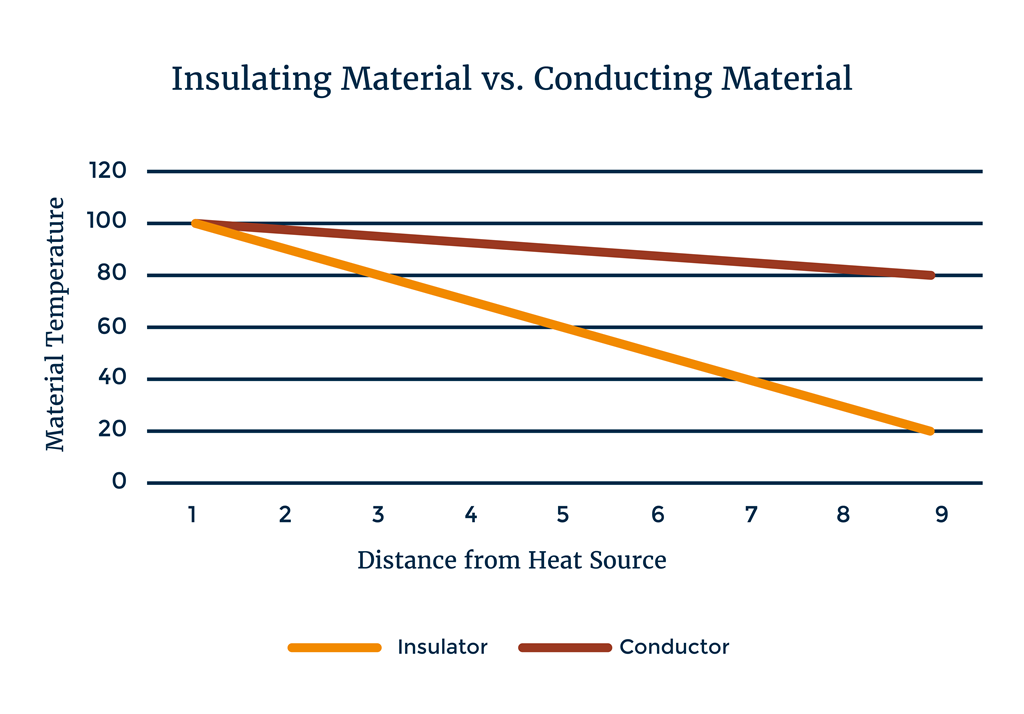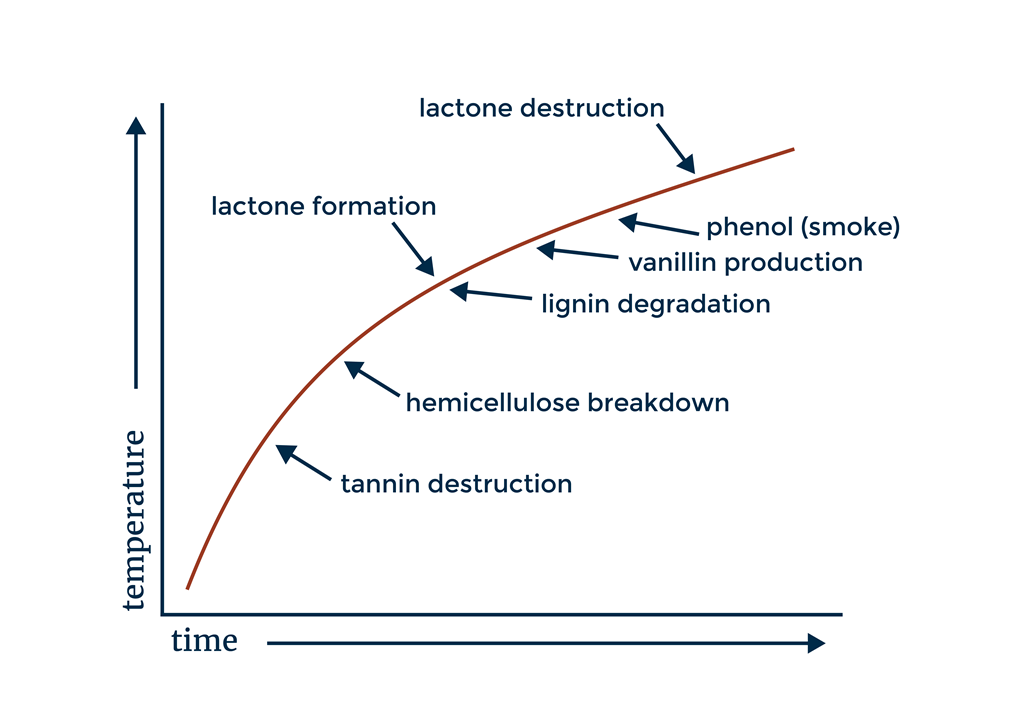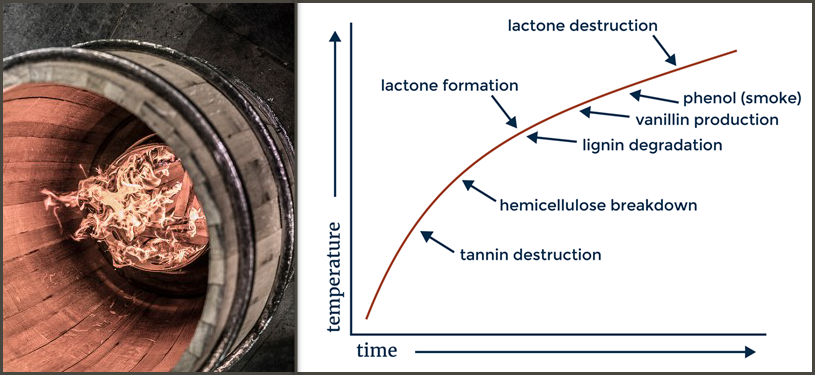
Historically, the benefits of aging spirits in charred barrels was discovered by accident. Intense heat was used in both barrel construction and as a way to cleanse the barrel after use. Through one or both of these processes, it was realized that storing beverage alcohol in oak containers that had been subjected to heat yielded a much more palatable drink. While the initial discovery was an accident, our subsequent research reveals the science behind why this happens.
When we char or toast a barrel we induce a chemical change in the wood which forms numerous aromatic compounds that marry with the distillate during maturation. Charring a barrel creates two distinct layers in the stave – a char layer and a red layer.
Char Layer
When intense heat is applied to a barrel, the outer surface of the stave is transformed in to a layer of charcoal. Little flavor comes from this layer because most of the wood has been broken down severely.
Wood is an insulating material and when subjected to heat, there is a severe temperature gradient that can be observed within the stave. If the stave was made out of a material that exhibited a high thermal conductivity, you would find that this gradient would be much less severe. Resembling more of a flat line than a slope. [See Figure 1]
Because of this gradient, underneath the charcoal layer another layer is formed, the red layer.
Red Layer
Rich and varied concentrations of aromatics are created in this layer from a much less severe thermal break down of wood constituents.
Oak is comprised of very few constituents. Of these, hemicellulose and lignin are uniquely important to flavor development in oak matured spirits. By applying differing heat intensities for set lengths of time, we can control the formation and the breakdown of specific aromatic compounds that are derived from these two constituents. [See Figure 2.]
Through our research we have furthered our understanding of how these compounds are formed and destroyed. This understanding has lead us to the development of a proprietary barrel toasting system. Our engineers, in conjunction with our research and development team, have developed a means of precisely controlling the application of heat to new barrels. A system we have coined, profiling. Different from the heat of a dry fire which is used in barrel construction, profiling is designed to create specific aromatic compounds within the wood and also, control their concentration.
By following a complex toasting profile that varies in both time and temperature, we are able to build a specific set of aromatic compounds within the wood itself. This system allows us to work in close partnership with distillers to develop custom barrels with unique attributes.
Over the years we have developed hundreds of different profiles designed to react with beverage alcohol in different ways. As part of our quest to further understand how this technology effects spirit barrels, we design different experiments to study the affect each profile has on a distillate.
Stay tuned for my next post which will outline a recent experiment we completed where we filled new barrels, each having a different profile, with aged whiskey and studied the flavor development over the course of six weeks.
Barrels for the World’s Finest Spirits
Find the Perfect Match Here.
Independent Stave Company – A Barrel to Fit Your Spirit. We’ll help customize your barrels with our wide range of options.
Ready to Get Started on your Barrel Journey? Let’s Talk
Contact: Chad Spalding, ISC Account Manager
Phone: 270-692-4674
Email: Chad.Spalding@IndependentStaveCompany.com
What is BrandScape? BrandScape is a way for product and service suppliers to talk directly to our audience. If you would like to learn more about BrandScape, please email Info@DistilleryTrail.com.


